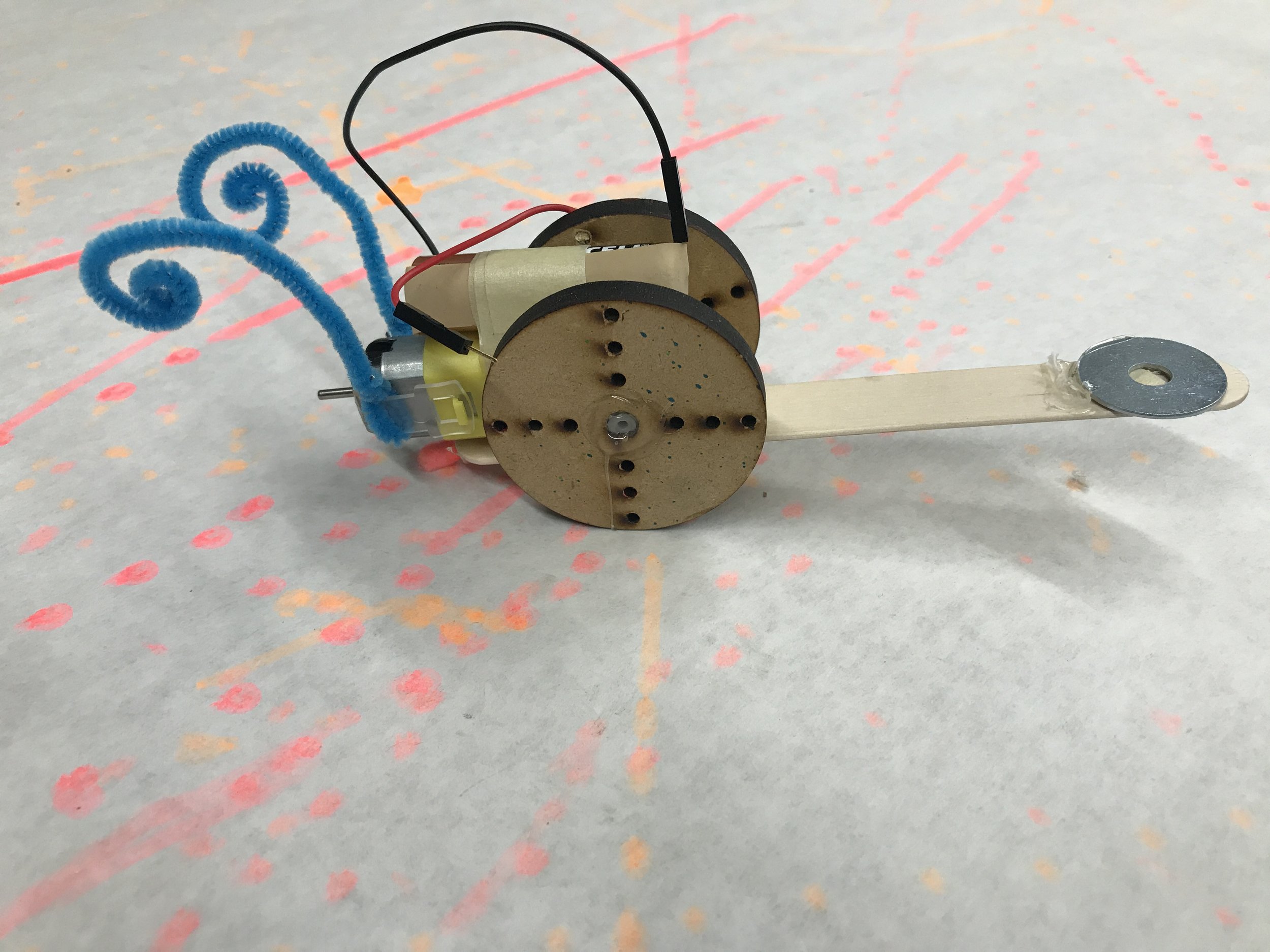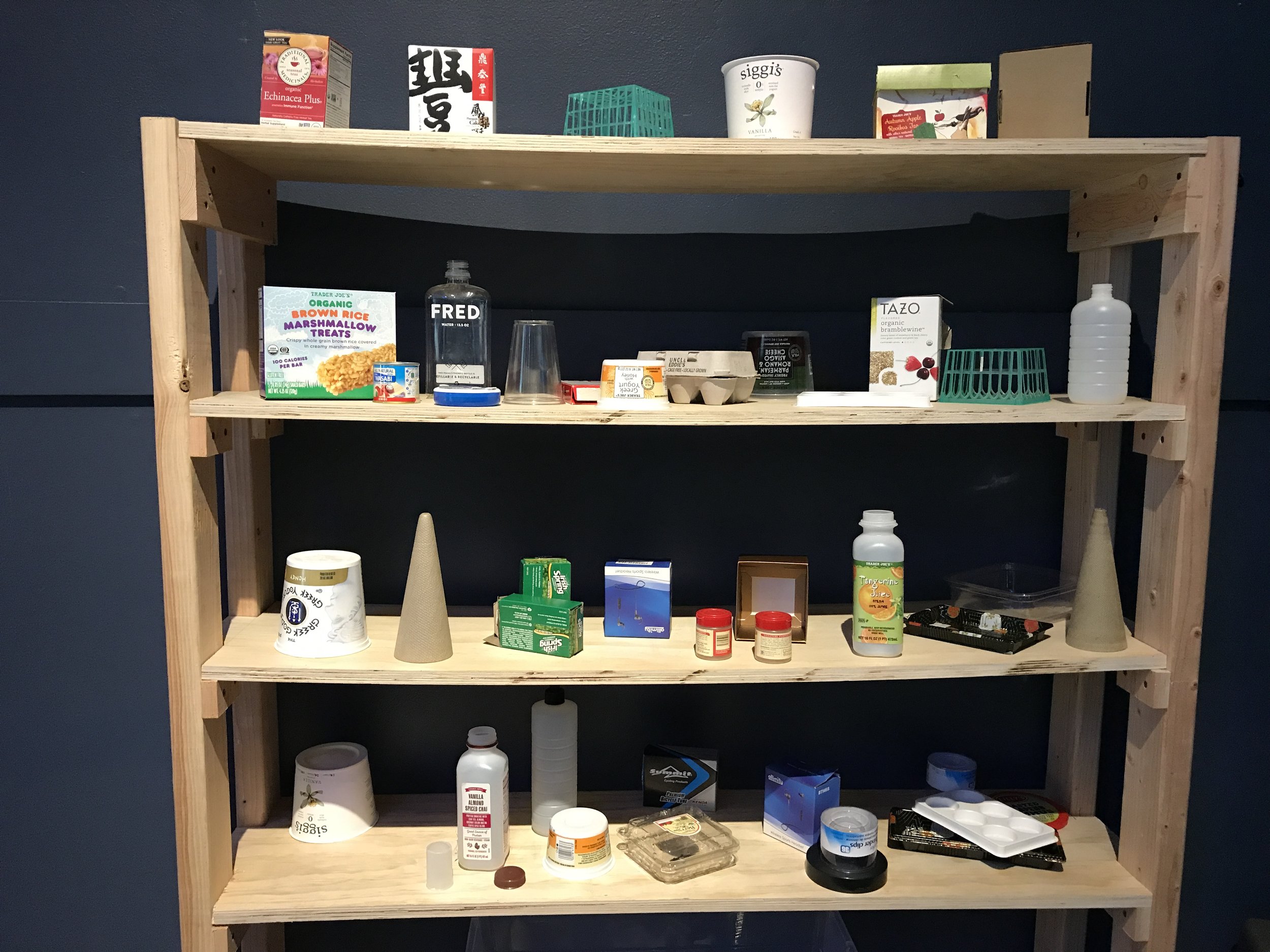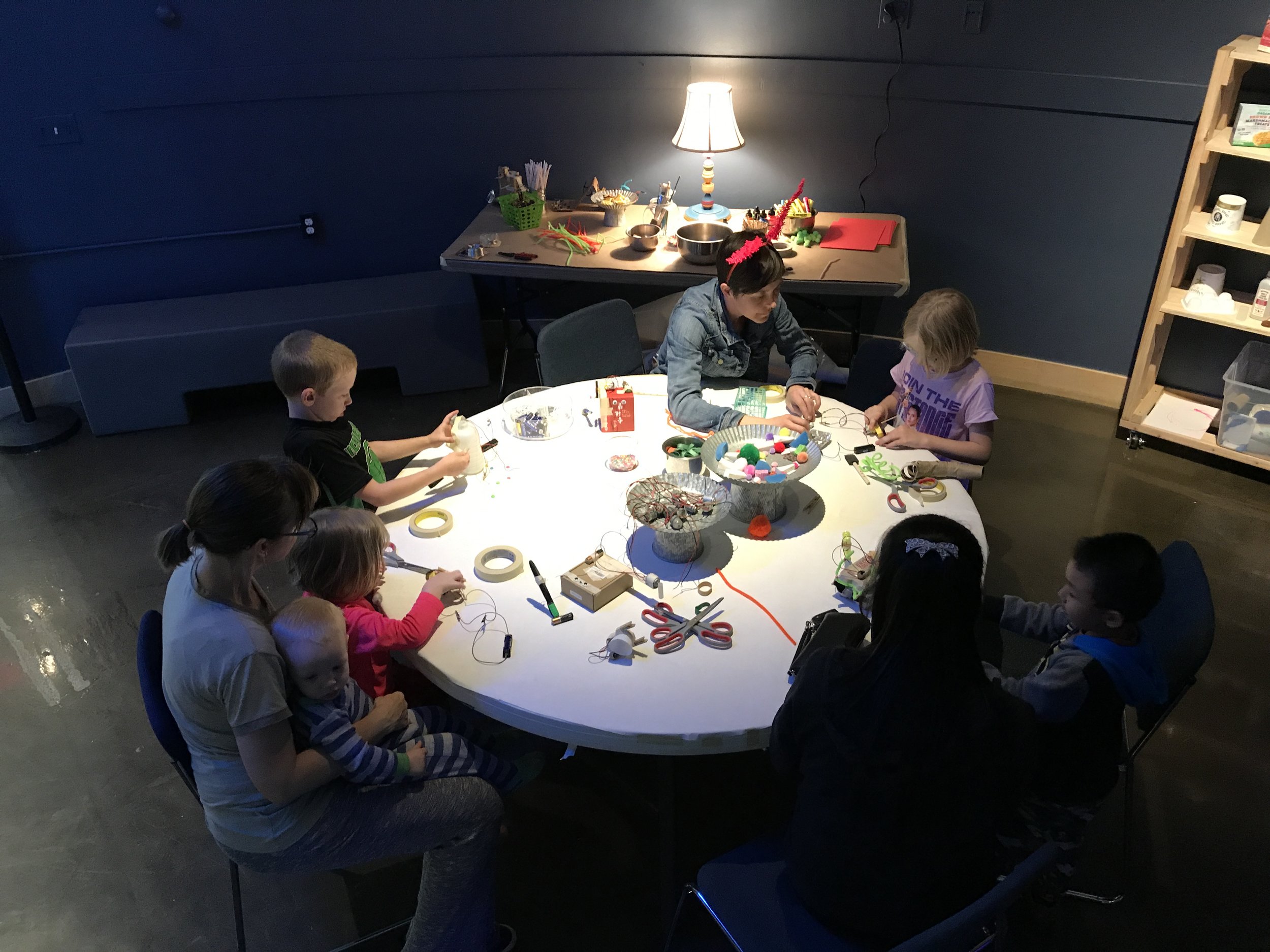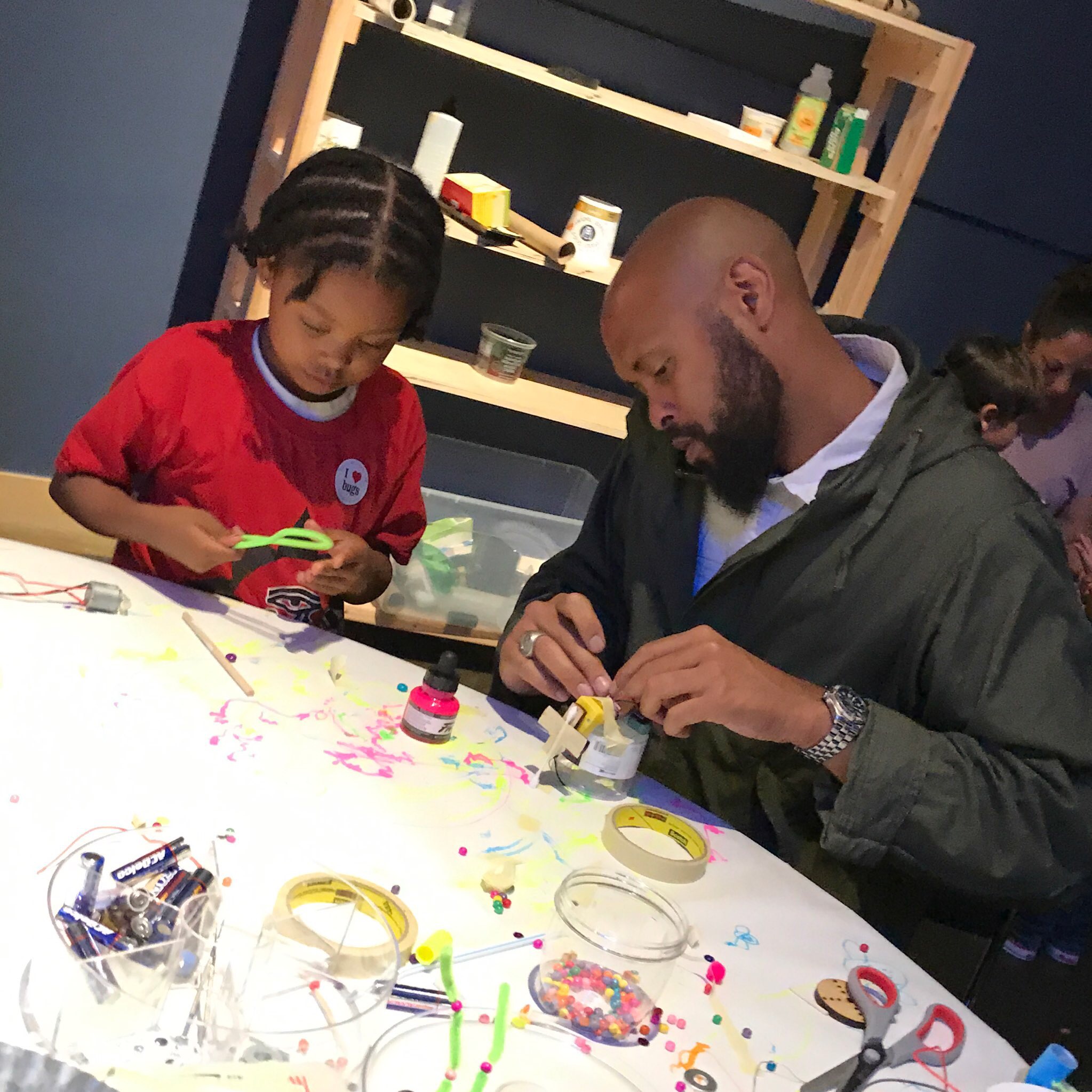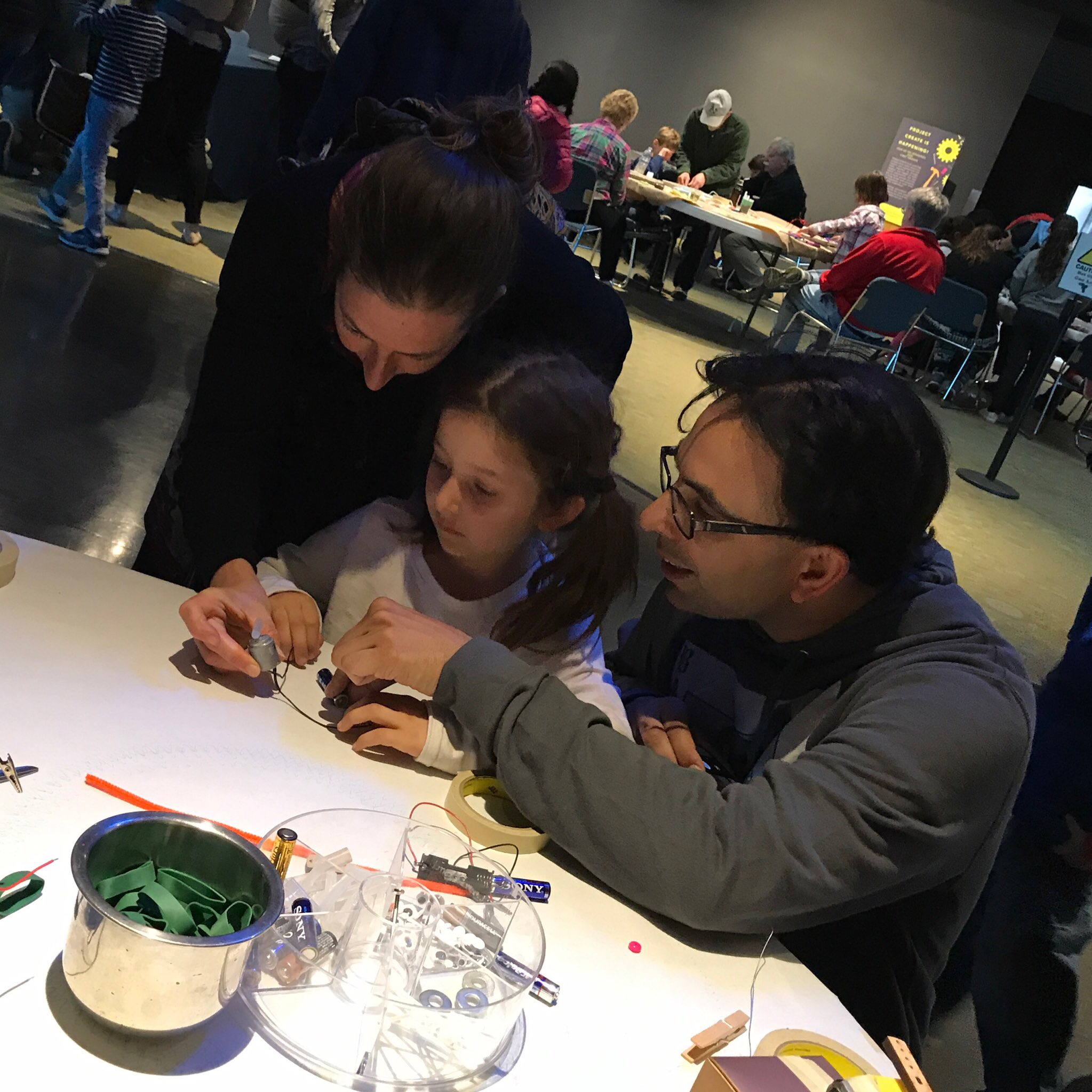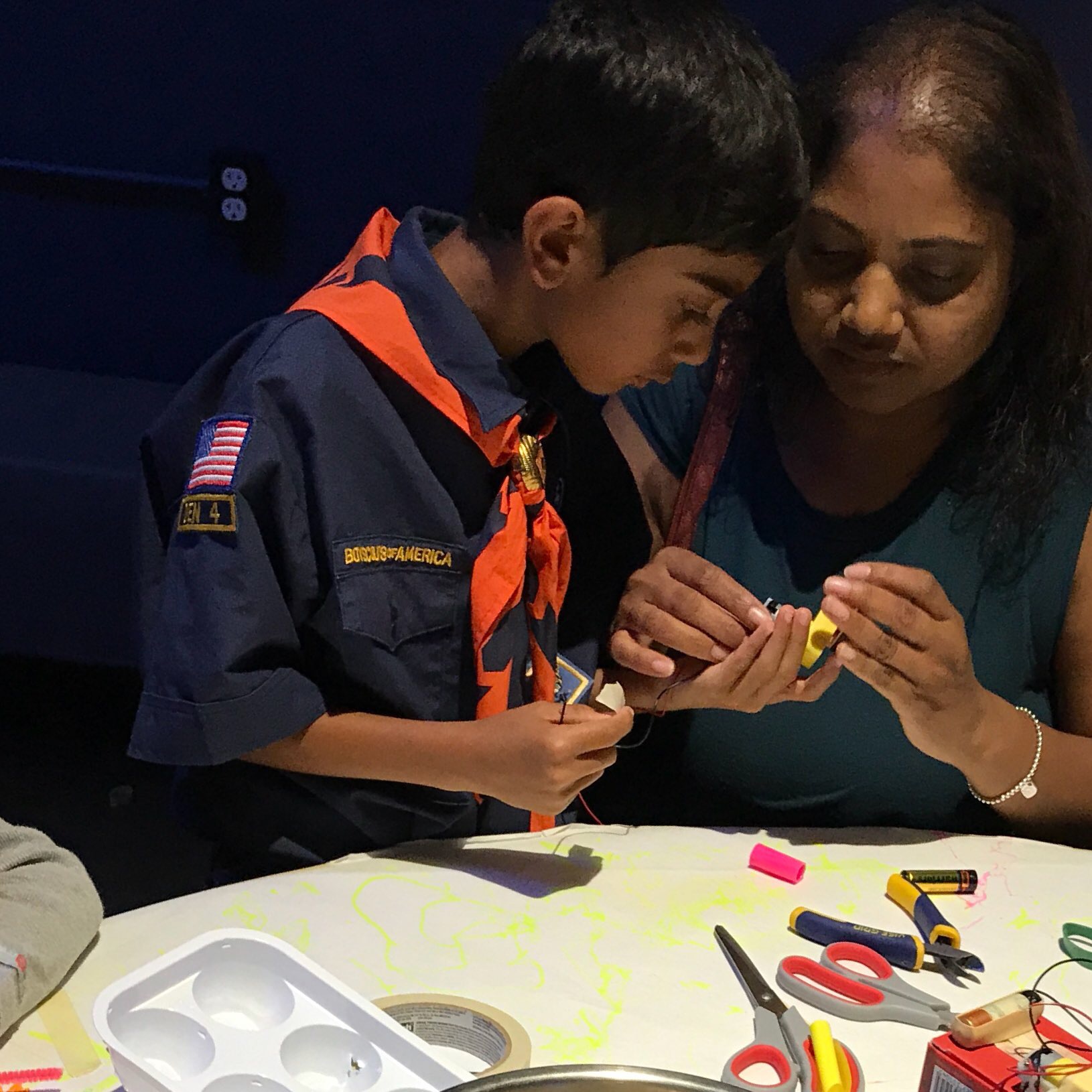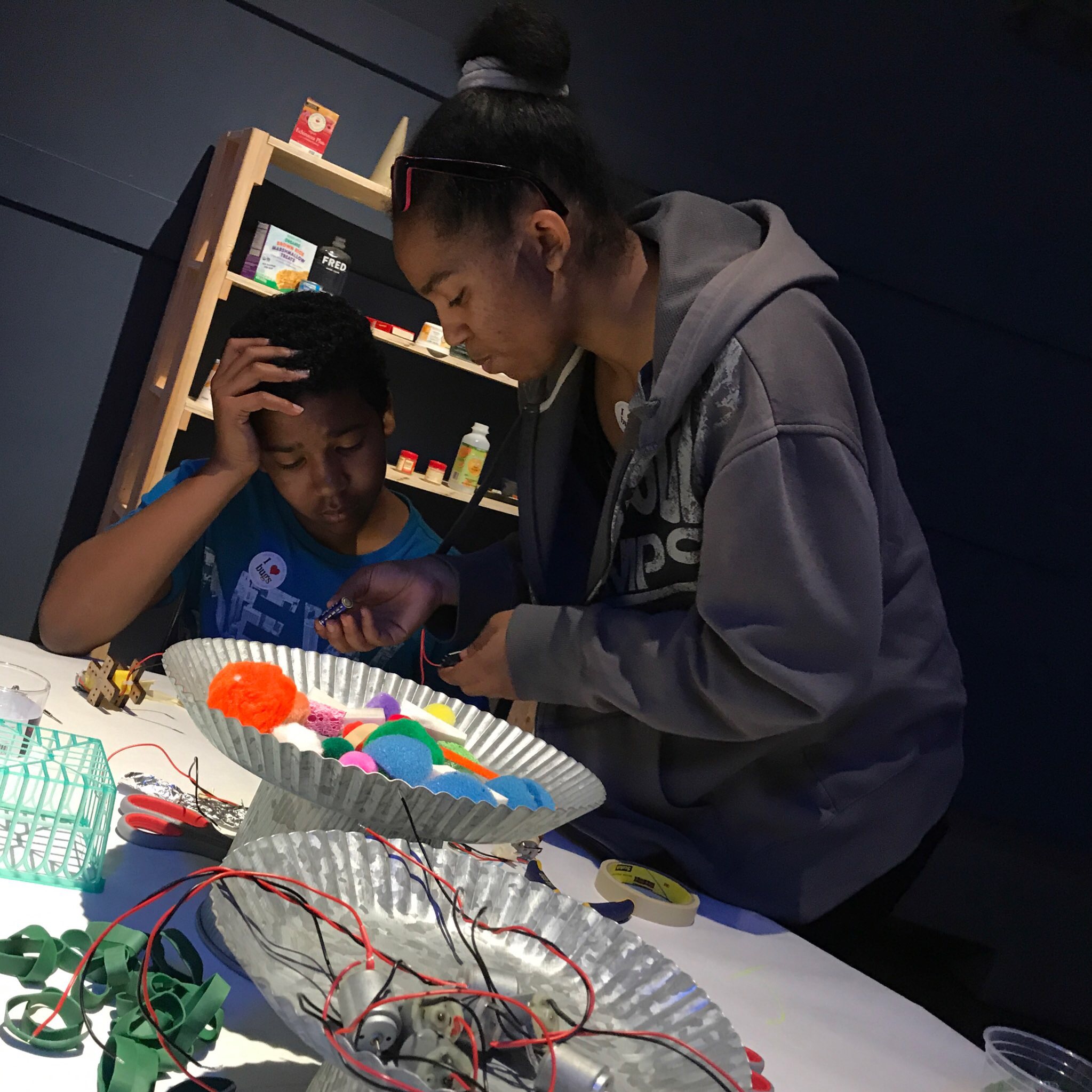Art Bugs at First Friday
As part of our tinkering residency at Chabot Science Center, we participated in First Friday, a really fun evening event for kids and adults. May's theme was bugs, so we thought about ways to tweak our art machine experiments to emphasize the varied movements of these bug-like creatures. We were a little concerned with paint being the only option for younger kids, so we raided the office supplies at Chabot and discovered that highlighters also looked great under the lights. The mix of pens and paint made for some really interesting designs.
As we were experimenting with the idea, we noticed that our fluorescent ink glowed under black light. We got interested in these initial UV experiments and thought that a glowing environments makes these jittering art bugs even more compelling. While it's not really our field, we had some fun thinking about glow-in-the-dark scorpions, bees using UV vision top ID flowers, and other hexapod connections.
We initially thought that we could simply install some UV bulbs in the track lighting, but after some research, we thought that building a frame for the table would be a better idea. Nicole created a quick and sturdy way to attach the black lights at exactly the right height above the table. We were a little concerned with paint being the only option for younger kids, so we raided the office supplies at Chabot and discovered that highlighters also looked great under the lights. The mix of pens and paint made for some really interesting designs.
In the afternoon on friday, we started creating a intentional environment for the activity. Some of the key elements included a shared workspace for building, a friendly materials table, and a shelving unit with the recycled “bodies” artfully arranged.
We set up the UV testing table in a darker side of the space and hung up some drawings on the wall for inspiration. We cut the series of colorful drawings into different shaped circles to play up the geometry and aesthetics of the designs.
Just as we finished setting up, we had a mother and son sit down at the table to start building a machine. They made a really cool machine out of an egg carton with neon green antennae. He was really excited about setting the artbug on the UV table and checked back in over the course of the night to see how it was doing.
The audience for the event included a lot of families with younger kids. This was the first time we had tried the slower moving DAGU motors. Although they allow for more complicated creations, we were also happy to see that even a simple design could make beautiful results. this girl's machine made a beautiful pattern (and her neon shirt matched the paint perfectly)!
Since we were trying out a brand new motor, it was only natural that we would see visitors using the materials in unexpected ways. We were delighted by this "breakdancing triangle" that used a motor angled down to spin a cardboard cone. The builders attached a irregular piece of cardboard to the base to both make it more stable and give it a wobbly movement.
It was great to see many people coming by, checking out the 'artbugs' moving around on the black light table, and having conversations about the machines. The black light testing table helped to emphasize the collaborative nature of the activity as people added to a larger drawing.
Once the paper was completely full (it took about two hours) we hung up the amazing artwork and added a new precut piece to the table.
Throughout the course of the night, we noticed some great interactions with parents and kids working together to make unique machines. The first friday event gave us the chance to really push on the ways that tinkering activities can be engaging to all ages and encourage kids and adults to collaborate.
Although the theme of 'bugs' gave us the impetus to try these specific experiments, we plan to keep prototyping all of these ideas. it will be exciting to continue experiments on how a welcoming and playful environment can lower the threshold for participation and how the slow motors and painting implements can widen the walls and raise the ceilings to this activity.
